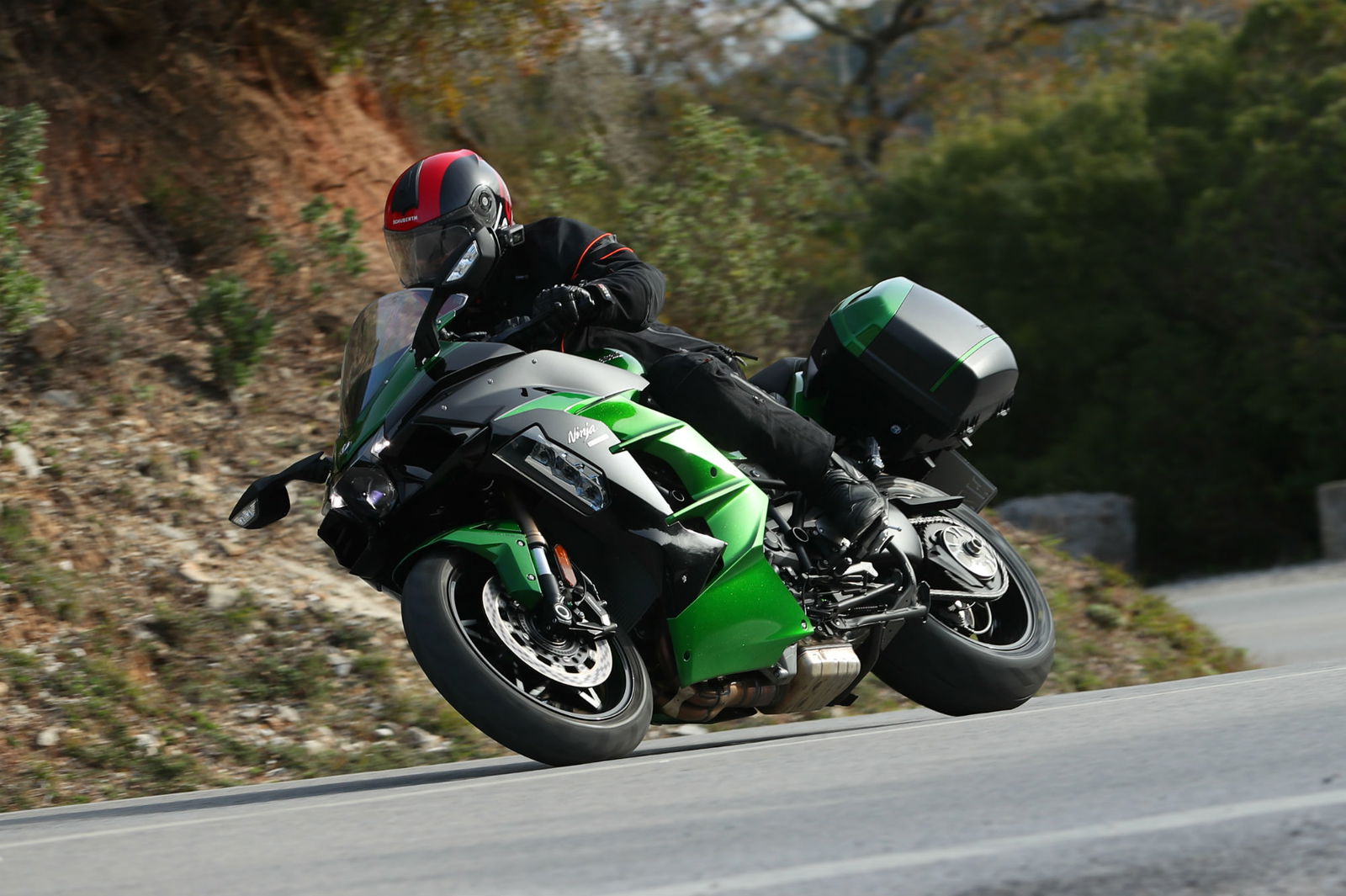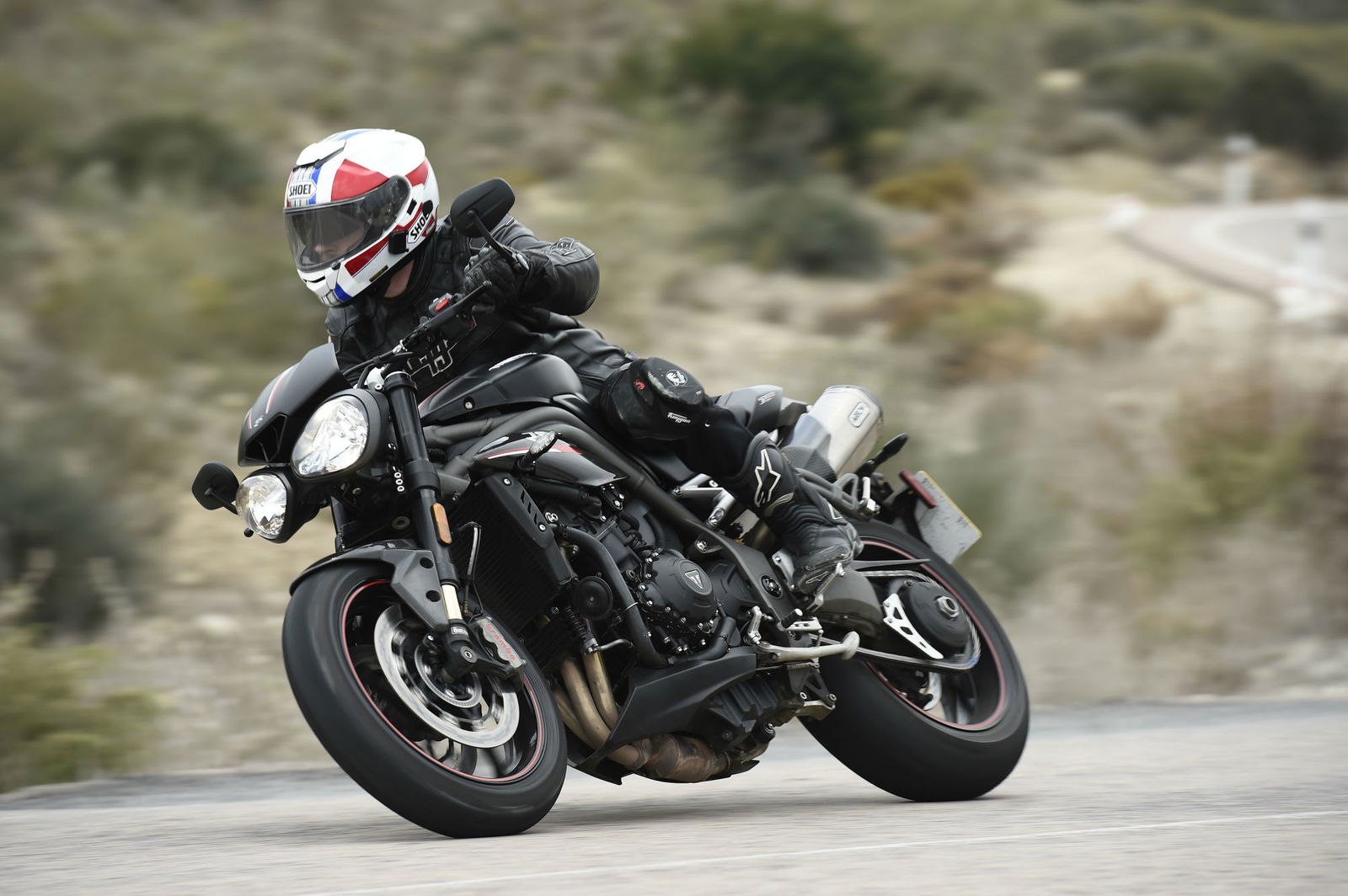First ride: Triumph Tiger 800 review
The new Tiger is refined, fun to ride and boasts the quality and spec of a large adventure bike in an easy-to handle middleweight package
.JPG?width=1600&aspect_ratio=16:9)
A POWER CUT while you’re on the loo is never good news. A power cut while you’re on the loo in a concrete hut in the middle of the Moroccan mountains, now that’s a different kettle of fish entirely.
You may be wondering what exactly this has to do with Triumph’s new Tiger 800… Believe it or not, it was the situation I found myself in at its launch recently – a launch on which we’d been promised nothing but adventure.
I can’t say much for my adventures in the dark, but the new Tiger certainly lived up to the promise. Although with 80 years of off-road heritage behind it, how could it not?
Triumph claim more than 200 changes throughout the engine and chassis (where exactly, they wouldn’t say) and as a result, the new Tiger is significantly more refined than its previous guise.
The XC and XR models have been further separated thanks to a host of new equipment, and each now excel at their respective ride style.
In short, the new Tiger now gives even big adventure bikes a serious run for their money.
I rode the top spec variants of both model – the XRT and the XCA – through the epic scenery of the Atlas Mountains.
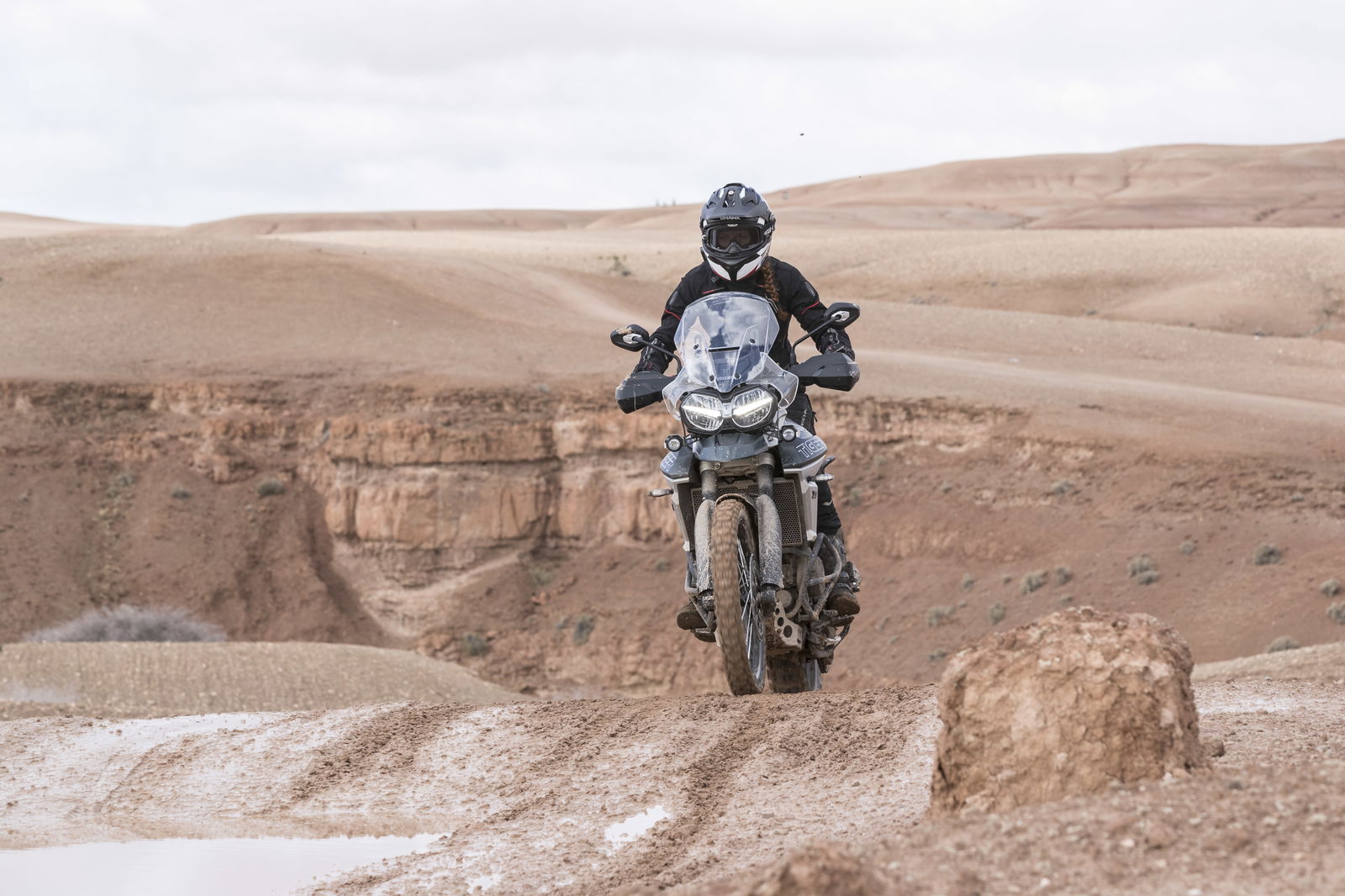
Engine:
While the signature 800cc triple is fundamentally the same as before – with the same con rods, pistons, etc - a number of tweaks and a mass optimised cooling system have made a huge difference.
First and foremost, a shorter first gear ratio makes the bike miles better off-road. It’s far more responsive and powerful lower down the revs, and so less clutch control is required on slower, trickier terrain. This also comes in useful on the road, for slow manoeuvres and low speed acceleration.
Peak torque of 58ft-lbs is delivered at 8,050rpm with the Tiger 800 boasting an incredibly flat torque curve. You can really feel this torque pick up from below 2,500pm, and keep going (decreasingly only slightly from around 9000rpm) all the way to the 10,500rpm red line.
Power, meanwhile, of 93.7hp is linear and smooth. The 800 may not match up to that of the 1200 in terms of acceleration, but it certainly isn’t slow.
A throatier engine note replaces the whine of the previous generation, although this is in part aided by the new silencer, which is not only better sounding but also more compact and lighter than the previous unit.
An improved throttle response and ride by wire system means there’s no lag as you wind on. This makes the engine feel far more responsive and characterful than the previous generation.
A2 riders can now request a dealer-fitted restriction kit on their Tiger 800, which is easily removed when they obtain a full licence.

Handling:
By moving the Tiger’s wide handlebars back by 10mm, Triumph has enhanced rider ergonomics significantly – especially for those of us with shorter arms.
At launch, this made for a more comfortable ride over longer distances, and the standing off-road triangle felt tighter, although not cramped. The repositioned bars also made for better low speed manoeuvrability, both on and off road. However, on the XRT, the steering felt ever so slightly heavy.
There’s now up to six riding modes available on the Tiger – depending on which model you opt for – which is a significant step up from the previous two (Rain and Road). While Sport mode allows the engine to rev freely, Off-Road keeps ABS at the front, deactivates it at the rear and implements off-road traction control, which allows the rear wheel to slip 50 per cent more than the speed of the front.
The introduction of both Off-Road and Off-Road Pro mode makes a marked difference to the XC model’s dirt riding capability. Inherited from the bigger brother Tiger 1200, Off-Road Pro completely deactivates the ABS and traction control, giving the bike a dirt bike feel, albeit in a larger package.
On our test ride we covered a variety of terrains, from stony plains to muddy climbs. At first, I opted for Off-Road mode and felt secure with the electronic rider aid safety net there to catch me if (when) my talent ran out.
However, as we made it into muddier sections, this proved more of a hindrance than a help. The off-road traction control repeatedly cut in as I revved the engine to the limiter, and instead of the back wheel finding grip on the dirt, I would come to a stop halfway up an incline.
Off-Road Pro was the answer, giving me had complete control to rev the bike to the red line as I snaked up the muddy hills.
Suspension:
The off-road going XC models have kept the capable long travel (220mm) WP suspension of its predecessor, while the XR and XRX still wear their Showa inverted forks.
The top spec XRT, meanwhile, has received adjustable Showa forks, to match the pre-existing Showa rear unit. The forks, with 180mm travel, are compression and rebound adjustable, while the 170mm travel RSU is preload and rebound adjustable.
These new forks really improve the bike’s road-going prowess, lending a plush, stable feel even at high speeds.

Brakes:
A new Brembo front braking system features on all but the entry-level XR, providing the stopping power you’d expect from an 800cc adventure tourer.
ABS and traction control are standard equipment on all models, and as mentioned earlier, differ depending on riding mode. Aside from in Off-Road mode, both systems proved capable unobtrusive.
Equipment:
With big tech usually comes big engines and, unfortunately, big prices. Case in point: Triumph’s Tiger 1200, an excellent machine, dripping in tech and priced from £12,200 to £17,000.
Well now Triumph has brought that same technology to the middleweight market, giving the new 800 a number of features from its bigger brother including heated rider and passenger seats and grips, LED lighting and a smart TFT dash.
Available on all but the basic XR, the 5-inch screen features up to two themes, with six different styles. It’s pretty intuitive and displays all required information in a compact, neat manner.
New switchcubes and backlit switches accompany the TFT dash giving the 800’s cockpit a smart, modern look. The Tiger’s capable cruise control system is activated easily from the left hand bar.
And behind (or in front – depending on which way you’re looking at it) the cockpit is a five-position, manually adjustable screen. This is possibly my favourite such system, thanks to its simplicity and ease of use. Just push (or pull) the screen away from its mounts and you can slide it up or down on sprung screws, before releasing it to lock securely into place. The mid and top spec models also add aero deflectors on either side of the screen.
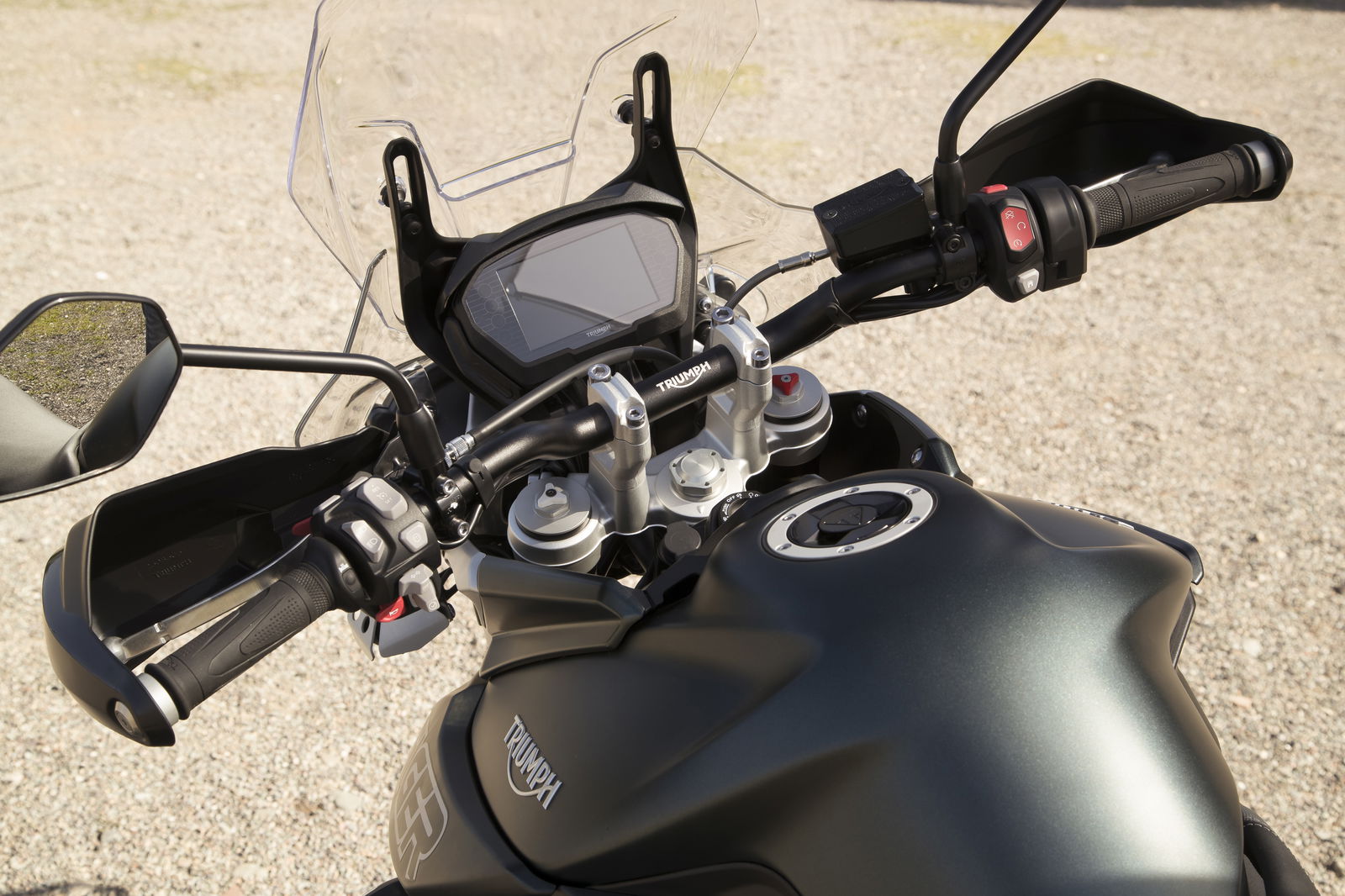
However, as with the 1200, much of the new tech is reserved for the higher spec models – the entry level XR, despite its low OTR price of £9,100, is very basically equipped and so is unlikely to be a popular choice. Although it does have the 5V USB and 12V power socket, which are standard on all models.
While the XC and XR share the same chassis, engine and much of the same equipment, they are two very different beasts, each excelling in their element.
The off-road-focused machine now boasts a 21-inch front wheel – something BMW’s F800GS has had since launch in 2008 – which proved stable and not at all skittish on our 30 mile off road test route. And available to dress both wheels are new handbook-approved Pirelli Scorpion Rally tyres, a great set of dual sport rubber, which keeps the bike stable on the rough stuff.
Finally, styling is spot on. It’s sharp, aggressive and everything you’d want of an adventure machine. A number of new colours, including the lovely Matt Cobalt (XRT) and Lucerne (XCX, XRX) blues will make the bike stand out against its muted competitors.
Distinct bodywork differences separate the two variants, with the XC models sporting a pronounced beak and contracting side panels, while the XR machines keep it sleek with monotone panels. New badges and graphics on both models, to my mind, look absolutely awesome.
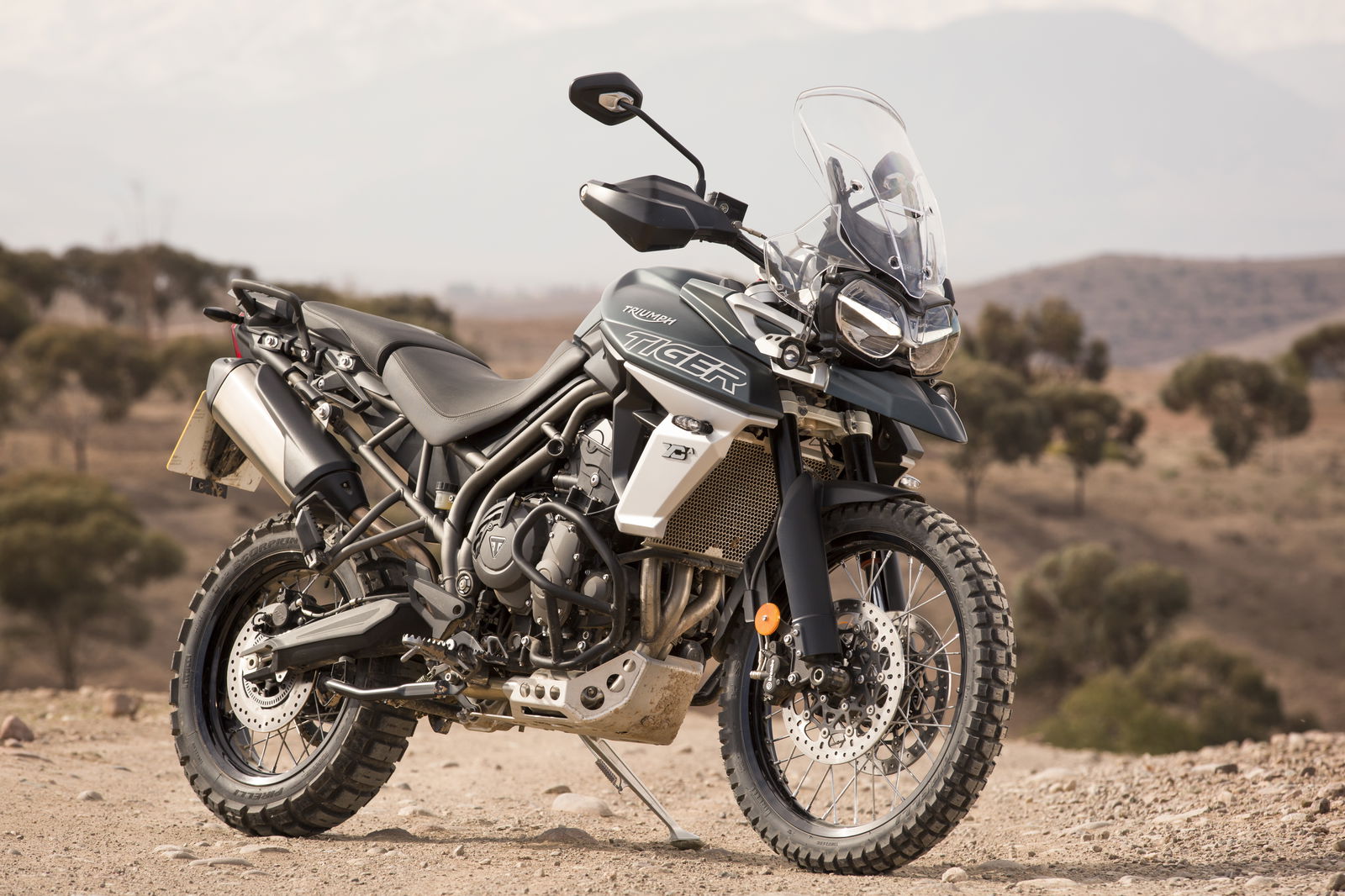
With more than 50 different accessories and a dedicated ‘Expedition pack’, it’s possible to push the top-spec Tiger’s prices much further than their 12-grand price tag.
We like:
Off-road pro is an intimidating prospect at first, but when you get the hang of it, turns the Tiger into a huge, powerful dirt bike.
We don’t like:
Both top spec machines come with heated rider and pillion seats as standard, but beware, if you opt for the low seat accessory option then you lose this luxury.
Verdict:
Power cut aside, the Triumph Tiger launch was one of the best launches I’ve been on in a while.
Why? Well you have to hand it to Triumph for the evolution the Tiger has made from the previous to this generation. It’s far more refined, fun to ride and boasts the quality and spec of a large adventure bike in an easy-to handle middleweight package.
It looks great, sounds even better and rides exactly how you’d want an 800cc machine to ride – refined on road, brutish off and comfortable regardless.
With six different variants – the XR, XRx, XRx low ride height, XRt, XCx and XCA – the Tiger range is arguably the most comprehensive of adventure touring machines. And with different features, equipment and price points, there’s something to suit everyone.
At roughly £500 more than the outgoing Tiger, and with prices ranging from £9,100 to £12,450 it’s not cheap, but value for money is what matters, and that’s clearly in abundance here.
With almost 70,000 units sold since it was launched in 2010, the Tiger 800 is one of Triumph’s most popular models, and it’s easy to see why.
Specs:
Model tested: Triumph Tiger 800 XRT and XCA
Price: XRT: £12,050, XCA: £12,450
Engine: 800cc liquid-cooled inline triple
Power: 93.7hp
Torque: 58ft-lbs @ 8,050rpm
Dry weight: 199 – 208kg (model dependant)
Seat height: XR models: 810 – 830mm, XC models: 840 – 860 (LRH: 760 – 780mm)
